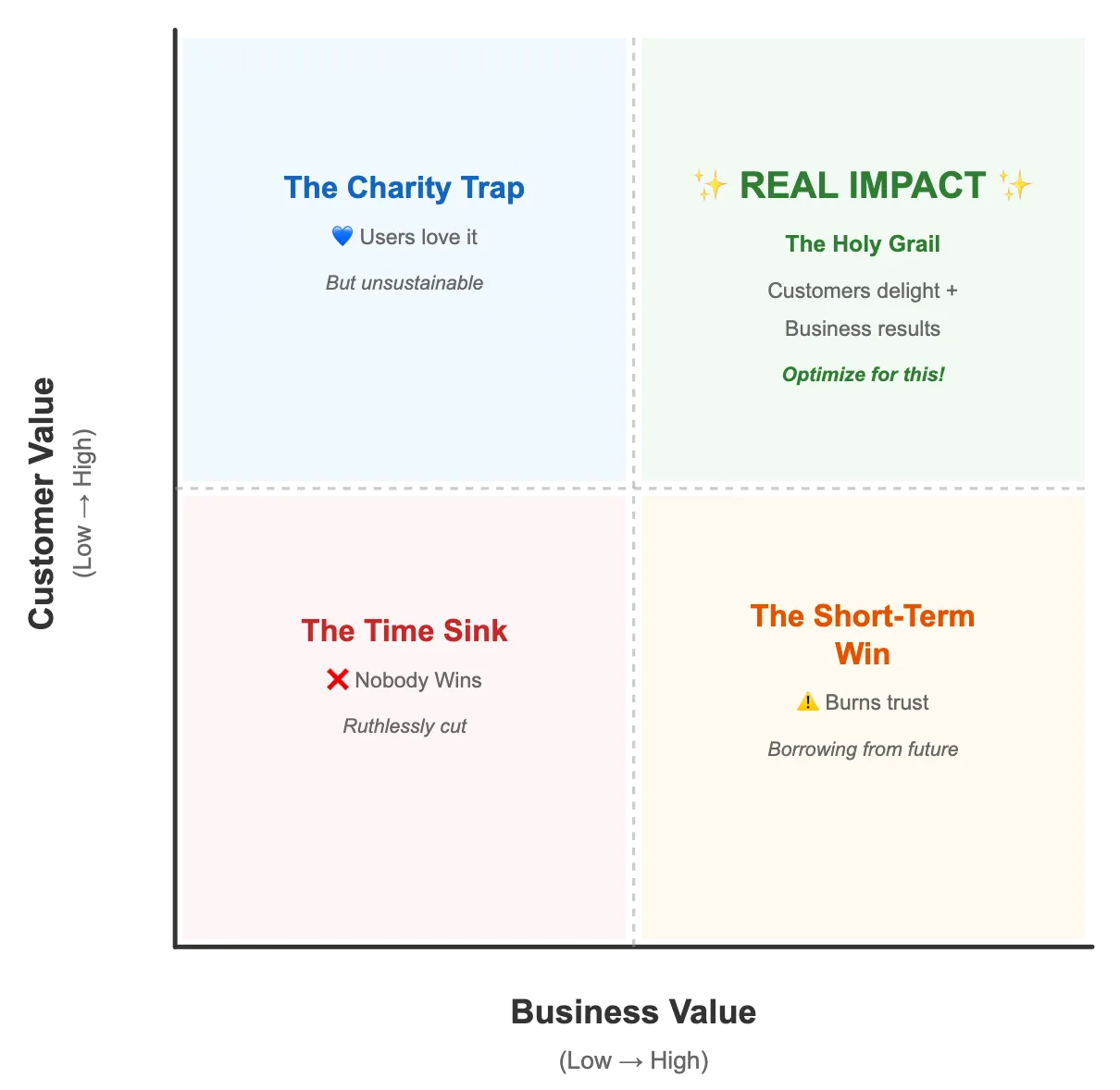It’s surprisingly easy to stay busy without making much of an impact.
A team ships features, hits sprint goals, and sees metrics move—but six months later, it’s unclear what actually mattered. Not because the team wasn’t working hard, but because “impact” is slippery to define.
I’ve found it helpful to think about impact along two dimensions: customer value and business value. When you map your work on both axes, patterns start to emerge about what’s actually moving the needle.
The Impact Scorecard
Think of it as a simple 2x2 matrix. One axis measures how much customers value what you built. The other measures how much it helps the business. Every product initiative lands somewhere on this grid, and where it lands tells you something important.

Quadrant 1: High Customer Value + High Business Value
This is what you’re aiming for. You’ve built something that genuinely helps customers while also driving metrics that matter to the business—maybe retention, revenue, or strategic positioning. A feature that reduces a key pain point and improves conversion. An onboarding flow that both helps new users succeed and increases activation rates. When customer needs and business needs align, you’ve found the sweet spot.
Quadrant 2: High Customer Value + Low Business Value
Customers love what you built, but it’s not moving business metrics. Maybe it’s a delightful feature that doesn’t connect to conversion or retention. These aren’t always wrong: some features are strategic investments in trust and brand. But if most of your roadmap lives here, it’s worth asking whether your work is sustainable long-term.
Quadrant 3: Low Customer Value + High Business Value
This drives short-term business results, but customers don’t find much value in it. Maybe it’s an aggressive upsell prompt or a feature that benefits the business more than users. These can create tension over time. Numbers might look good this quarter, but you’re spending down trust, and that has costs down the road that don’t always show up in dashboards.
Quadrant 4: Low Customer Value + Low Business Value
Neither customers nor the business benefit much. This often happens when we build based on assumptions rather than evidence, or when we optimize for stakeholder requests without validating demand. It’s not a failure, it’s just learning. The goal is to recognize these early and redirect effort toward higher-impact work.
What This Means in Practice
Try mapping your recent launches on this grid. You’ll probably find a mix across quadrants—that’s normal. The exercise isn’t about judging past decisions, but about spotting patterns in where you’re investing time.
If you notice most of your work clustering outside Quadrant 1, it might be worth asking: How could we shift more effort toward work that delivers both customer and business value?
Impact happens at the intersection of solving real customer problems and moving metrics that matter to your business. Everything else is still valuable work. You learn, you build skills, you discover what doesn’t work. But knowing the difference helps you be more intentional about where you spend your time.